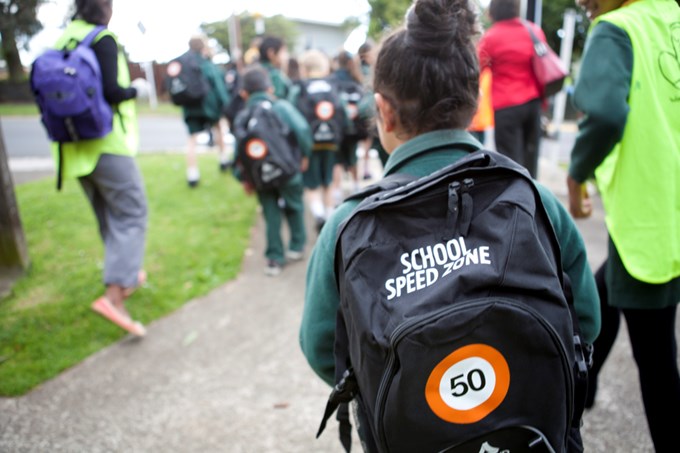Manurewa Local Board wants to bring the safer streets traffic calming measures delivered in the Wordsworth Quadrant to the nearby Coxhead Quarter.
After investing heavily at Wordsworth, the board plans to work with Auckland Transport on similar measures at Coxhead, centred between Weymouth, Mahia and Great South roads.
Home to schools, shops, parks and community centres, residents have complained about speeding drivers and more than 130 crashes in recent years.
The board is proposing spending $4million, partly from the Regional Fuel Tax, on measures including speed humps, raised tables and zebra crossings to improve safety.
In 2019 speeding was cited in 73 fatal, 408 serious and 1457 minor injury crashes in New Zealand.
Board chair Joseph Allan says that’s a concern in an area with many children walking to and from school, parks, shops and visiting friends and whanau.
“One of our outcomes is that ‘our safe and accessible network provides transport options to meet community needs’. That means people who walk need to be kept safe. We make no apology for that.
“We know there are more accidents in urban areas like ours, children and older people die or are seriously hurt most often. But we also know there are some easy things we can do, and the most obvious is slowing down,” he says.
Wordsworth area residents and schools report the speed measures have worked, that children are safer, and that more of them are walking or on bikes.
“As with any change, there has been resistance from a few people raising concerns around increased drive times, the number of speed humps and the cost,” Allan says.
“But you only need ask people to imagine a life saved is one of their own children, a brother, sister, parent, grandparent or a family friend. The penny drops and people get it pretty quickly. The support from the community is overwhelming.”
Allan says studies estimate the social cost of crashes involving pedestrians at $300 million a year, partly because their injuries are almost always severe, the average walker hospitalised costing twice as much to treat as a car’s occupants.
“We are safer than ever behind the wheel, with our seatbelts and airbags, but it’s estimated it will cost about $4 million over their lifetime to treat a six-year-old pedestrian who suffers a serious head injury.”
Children aged 0-14 are most at risk of hospitalisation, then those 65 plus - older adults accounting for a quarter of fatalities because of their fragility, then rangatahi aged 15-24.
Māori and Pacific children are at particular risk. In terms of time spent walking in the road environment, the risk for Pacific children is seven times that of pakeha children, and three times that of Māori.
“We can’t continue to accept that, especially when nine out of 10 pedestrian injury accidents and seven out of 10 fatalities are on urban roads, the ones we all live on,” Allan says.
“Speed and pedestrians are a lethal combination because the faster you go, the harder it is to stop, and the more damage you do. If you hit someone at 30kmh there’s a 5 per cent chance they’ll be killed, compared with a 40 per cent risk at 50kmh or a 96 per cent chance at 70 kmh.
“There hasn’t been the progress we need in reducing serious injuries. As a board, we think we can do better for our people, and we also believe they want us to, because the life that gets saved might be that of someone they love.”


